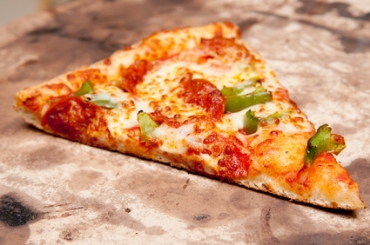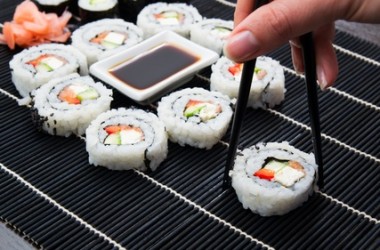
A good way to learn about the history of a given country is by analyzing its gastronomic customs.
The way in which man learned to deal with the changes around him, such as the evolution of agricultural and pastoral activities or the advancement of tools used by his civilization, are reflected in his dishes around the world. For example, in some religious organizations, such as the Egyptians, olive oil was used in worship, as it was considered sacred, while populations linked to the Western Judeo-Christian culture tend to have a greater appreciation for wine, even appearing in records of biblical temples, which report the use of the drink in the preparation of food.
Discover some typical foods from various countries around the world:
Argentina
With Spanish colonization throughout the 16th and 17th centuries, the cuisine that had previously been based on corn-based foods began to give greater importance to meat-based foods, and today Argentines are known as the largest consumers of red meat in the world. As a result, Argentine barbecue has become very popular and includes several types of meat, such as morcilla (chorizo) and tripe.
There are also customs that were adopted from indigenous and Creole peoples, such as the traditional empanadas, which are dough filled with beef cut into small cubes and cooked with beef fat, and locro, a mixture of corn, beans, meat, bacon, onion and pumpkin. Yerba mate, which in Brazil we call chimarrão, is also very present in Argentine daily life.
Mexico
Much of the influence of Mexican cuisine comes from pre-Columbian times, with Spanish and Aztec characteristics. Pepper is always a strong ingredient, including in sweets. Corn is a prominent ingredient, along with beans and some products of indigenous origin such as tomatoes, pumpkin, avocado and cocoa.
 A typical Mexican dish is guacamole, a puree made with seasoned avocado, which is served as a side dish with many meals. Interestingly, the original guacamole had chocolate in its composition. Nachos, those crunchy triangular shapes made basically from corn and covered in cheese, are also popular in this cuisine, as are quesadillas, which are corn tortillas mashed with salt and lard and grilled to melt with the cheese filling.
A typical Mexican dish is guacamole, a puree made with seasoned avocado, which is served as a side dish with many meals. Interestingly, the original guacamole had chocolate in its composition. Nachos, those crunchy triangular shapes made basically from corn and covered in cheese, are also popular in this cuisine, as are quesadillas, which are corn tortillas mashed with salt and lard and grilled to melt with the cheese filling.
France
French cuisine is considered the most sophisticated in the world, despite the wide variety of ingredients found throughout France. The presence of exotic cheeses and meats is recognized worldwide. Foiegras, for example, is the liver of a duck or goose that has been overfed and has a buttery consistency. It is believed that the crepe, very common in many regions of Europe, originated in France around 1930.
 There are indications that this popularity came from Victor Hugo, during the Renaissance, who wanted to be one of Les Miserables at mealtime. The dish is a type of pancake made from wheat flour, milk and eggs, cooked in a frying pan, and can be sweet or savory.
There are indications that this popularity came from Victor Hugo, during the Renaissance, who wanted to be one of Les Miserables at mealtime. The dish is a type of pancake made from wheat flour, milk and eggs, cooked in a frying pan, and can be sweet or savory.
Another important culinary custom is the consumption of wine. The most traditional wine there, especially after the Second World War, is the full-bodied wine made from the Merlot grape, which generally has aromas of red fruits, blackberries and plums, and even chocolate and cassis.
Italy
 When talking about Italian cuisine, we cannot leave out pizza and pasta, but it is worth remembering that the country’s gastronomic culture goes far beyond that. For example, Italians are big consumers of ice cream and coffee. The Italian gelato tradition began in the city of Florence in the 16th century, but the custom was already taking its first steps in the 1st century, with the Roman emperor Nerone, who ordered ice and snow to be brought from the mountains to mix with fresh fruit. Bruschetta, an appetizer made with toasted bread with olive oil and garlic, is another typical Italian dish.
When talking about Italian cuisine, we cannot leave out pizza and pasta, but it is worth remembering that the country’s gastronomic culture goes far beyond that. For example, Italians are big consumers of ice cream and coffee. The Italian gelato tradition began in the city of Florence in the 16th century, but the custom was already taking its first steps in the 1st century, with the Roman emperor Nerone, who ordered ice and snow to be brought from the mountains to mix with fresh fruit. Bruschetta, an appetizer made with toasted bread with olive oil and garlic, is another typical Italian dish.
There, the wine custom is also very present and the success is due to Sangiovese, which is the most cultivated grape in the country. In fact, Super Tuscans often use French Merlot in the blend with Sangiovese, due to the smoothing effect.
Japan
 The priority in Japanese cuisine is the quality of its products and the seasoning of the food. Rice is an essential ingredient, as most dishes are made with or accompanied by it. Soy sauce and vegetables are also very present in this culture. The large presence of fish meat in the food is a result of the country’s location.
The priority in Japanese cuisine is the quality of its products and the seasoning of the food. Rice is an essential ingredient, as most dishes are made with or accompanied by it. Soy sauce and vegetables are also very present in this culture. The large presence of fish meat in the food is a result of the country’s location.
Ramen, a type of Chinese noodle dipped in various broths and seasoned with soy sauce, is also very common in Japanese cuisine, as is gyudon, which is a bowl of rice topped with beef and onions, cooked in a sweet sauce. Sushi was initially sold at street food stalls as a quick-service option, similar to fast food, and originated from an ancient technique of preserving fish meat in vinegared rice.
Another interesting fact about Japan is the famous chopsticks, those wooden or metal sticks that the Japanese use as cutlery, instead of the forks and knives that we are used to in the West.
Source: https://www.receitasdemae.com.br/receitas/comidas-tipicas-dos-paises-1/


